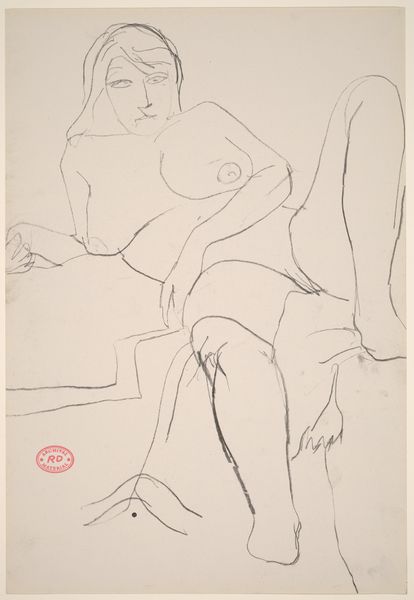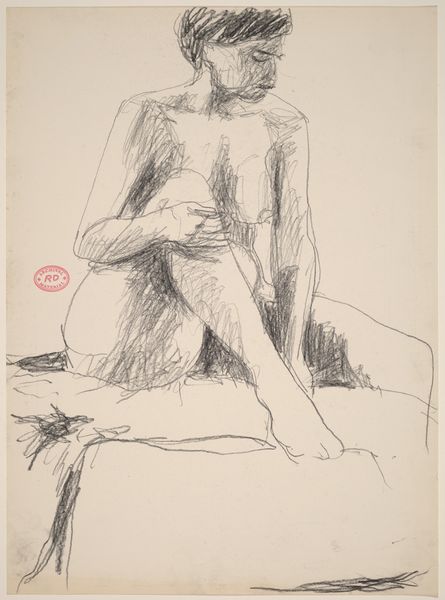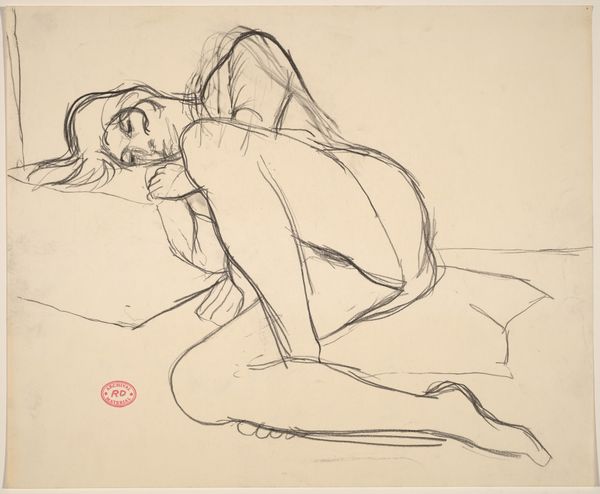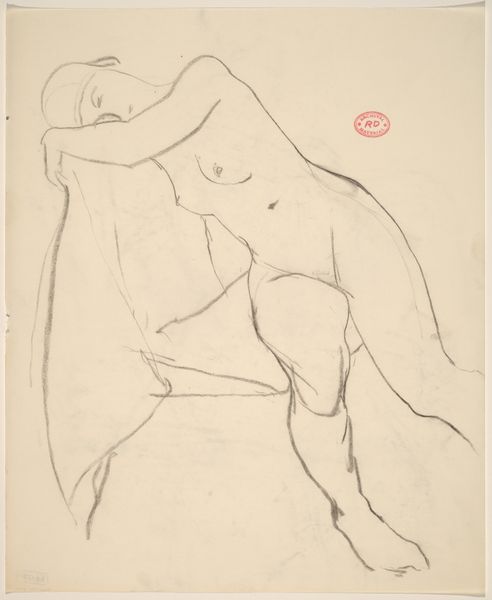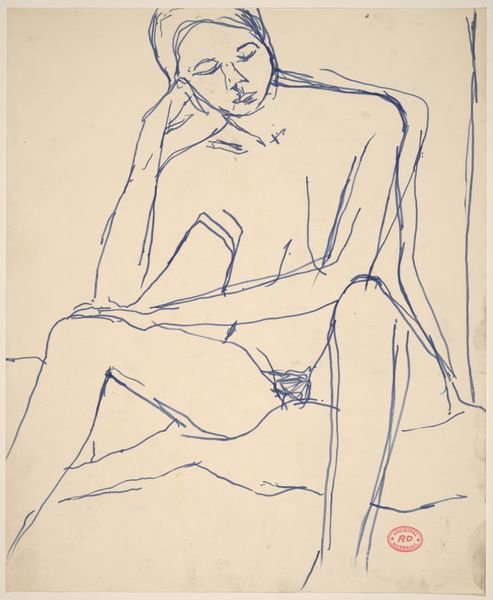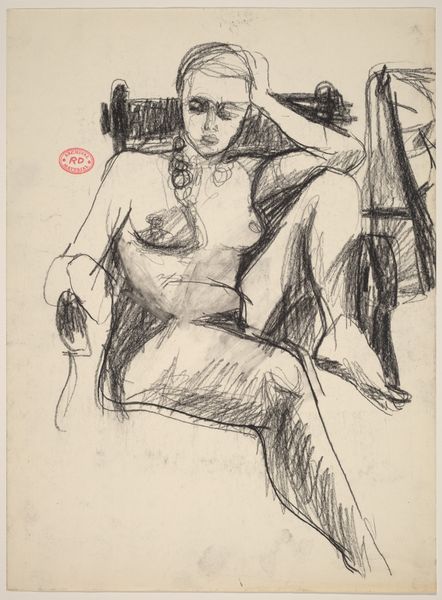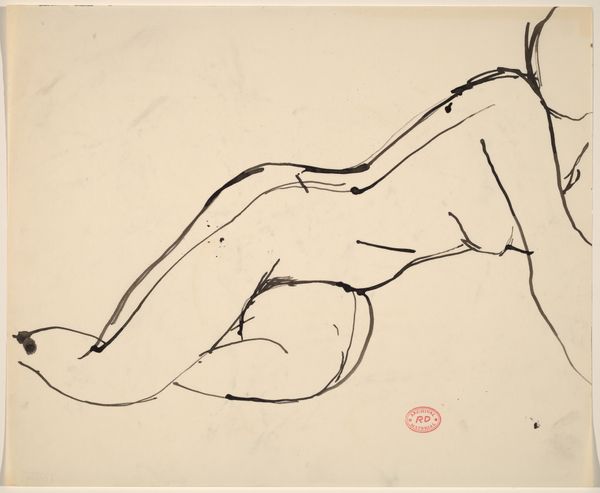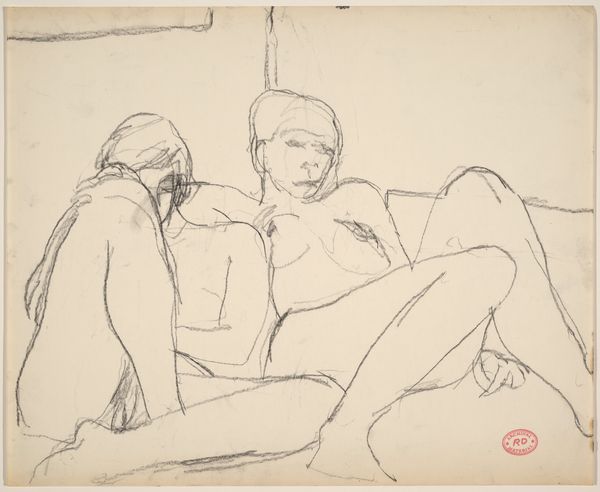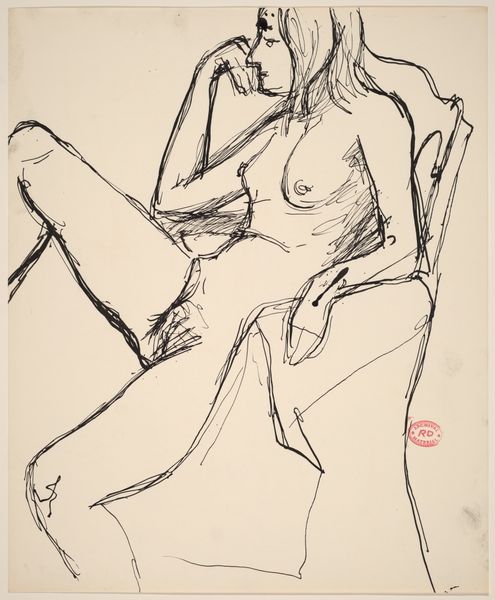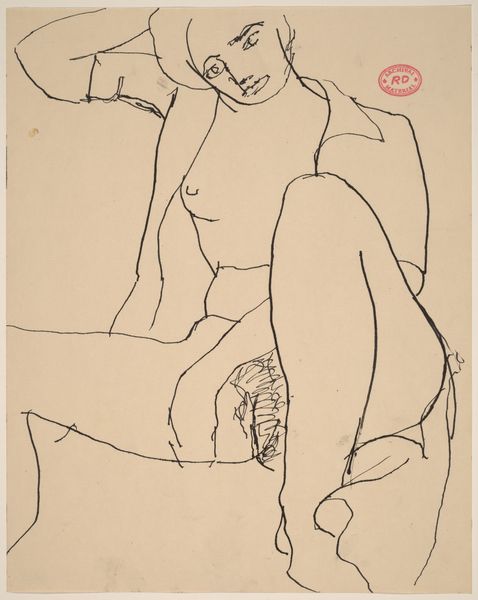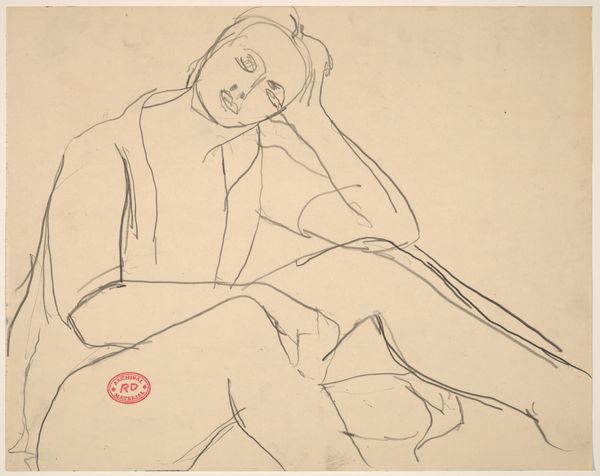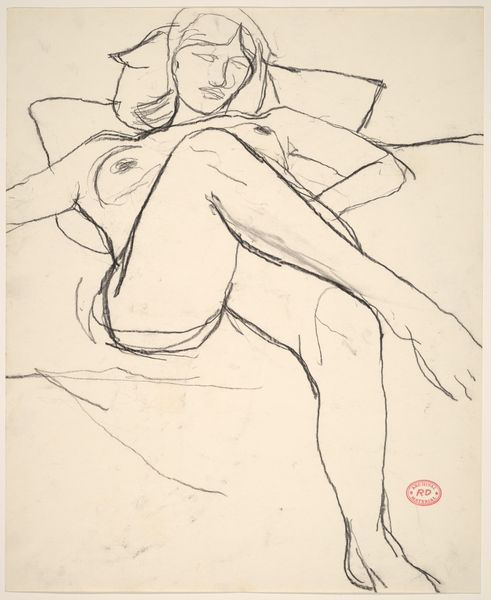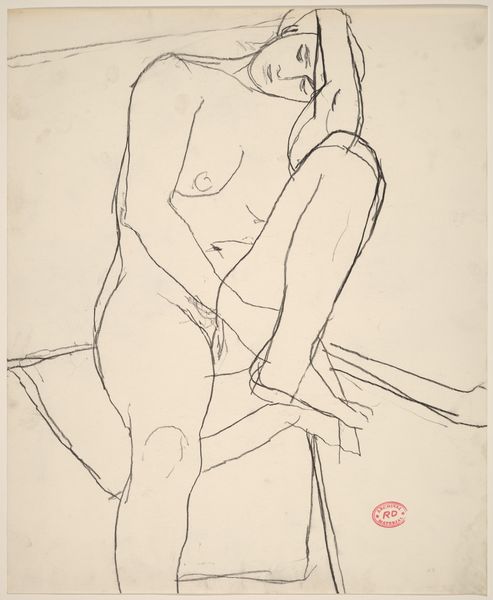![Untitled [two resting nudes] by Richard Diebenkorn](/_next/image?url=https%3A%2F%2Fd2w8kbdekdi1gv.cloudfront.net%2FeyJidWNrZXQiOiAiYXJ0ZXJhLWltYWdlcy1idWNrZXQiLCAia2V5IjogImFydHdvcmtzLzU5MDI0ZjQyLTQ5MWEtNGE2OC1iN2Q3LWRmYzM5NmI3YjE3MS81OTAyNGY0Mi00OTFhLTRhNjgtYjdkNy1kZmMzOTZiN2IxNzFfZnVsbC5qcGciLCAiZWRpdHMiOiB7InJlc2l6ZSI6IHsid2lkdGgiOiAxOTIwLCAiaGVpZ2h0IjogMTkyMCwgImZpdCI6ICJpbnNpZGUifX19&w=3840&q=75)
drawing, ink
#
drawing
#
ink drawing
#
figuration
#
bay-area-figurative-movement
#
ink
#
nude
Dimensions: overall: 35.2 x 43.2 cm (13 7/8 x 17 in.)
Copyright: National Gallery of Art: CC0 1.0
Editor: So here we have Richard Diebenkorn’s "Untitled [two resting nudes]," created sometime between 1955 and 1967, an ink drawing. I am really struck by how the bare minimum of lines can describe such a human scene. How would you interpret this work? Curator: What I find fascinating here is the very economy of the material itself. The ink, a readily available and affordable substance, is used to depict a subject historically reserved for more 'precious' materials. How does that accessibility affect our understanding of the work? Does the immediate nature of the medium suggest a commentary on the disposable nature of observation, or perhaps the quick sketch being a challenge to more labored studio work? Editor: That's interesting. I hadn't thought about the class implications of the materials. The artist used something so commonplace, to render an old, revered, almost academic subject! Curator: Exactly! Consider the labor involved. Diebenkorn is not laboring to produce a flawless surface, hiding every trace of the hand. The immediacy is part of the artmaking here. He's foregrounding the means of production, inviting us to contemplate not just the finished image, but the process itself. Editor: So, by seeing the quick, sketch-like nature of the line, we’re being invited to participate in the *making* of the work itself, mentally? To reconstruct it? Curator: Precisely. It democratizes the artistic process by highlighting the accessibility of both the materials and the act of creation itself. And perhaps challenges the consumption habits of the art world. Is this 'finished' enough to be 'sold' as a nude? What is the relationship between artist and seller when showing 'sketches'? Editor: I see. I had been focused on the composition, but now I realize the real statement might be about the very *making* of the artwork. Curator: And that's the beauty of a materialist approach - it re-centers the art within its socioeconomic context, forcing us to ask who has access, who benefits, and what assumptions we bring to the table when engaging with art.
Comments
No comments
Be the first to comment and join the conversation on the ultimate creative platform.
